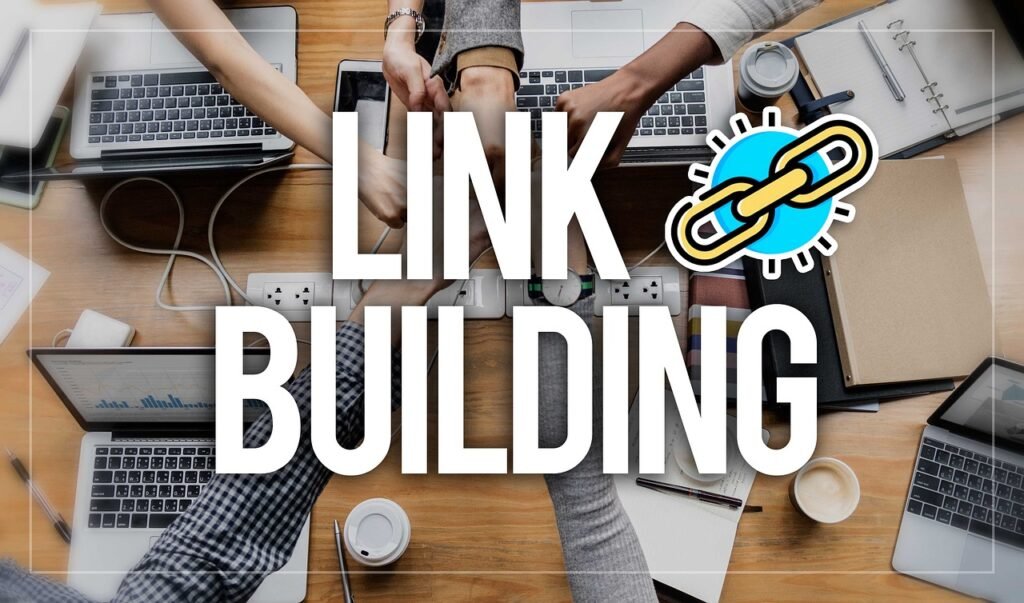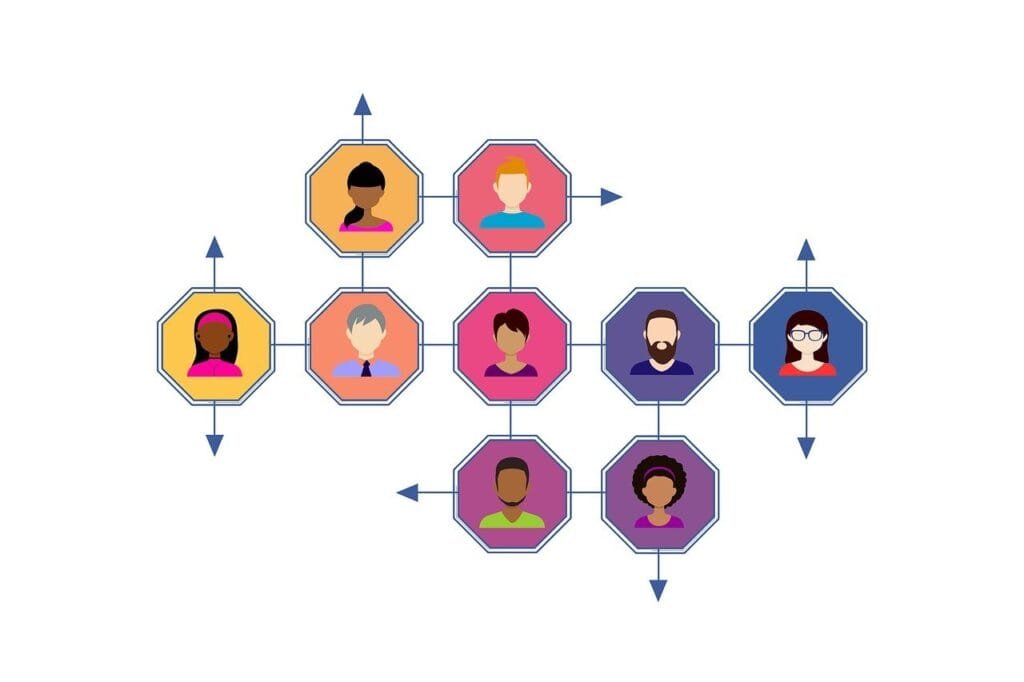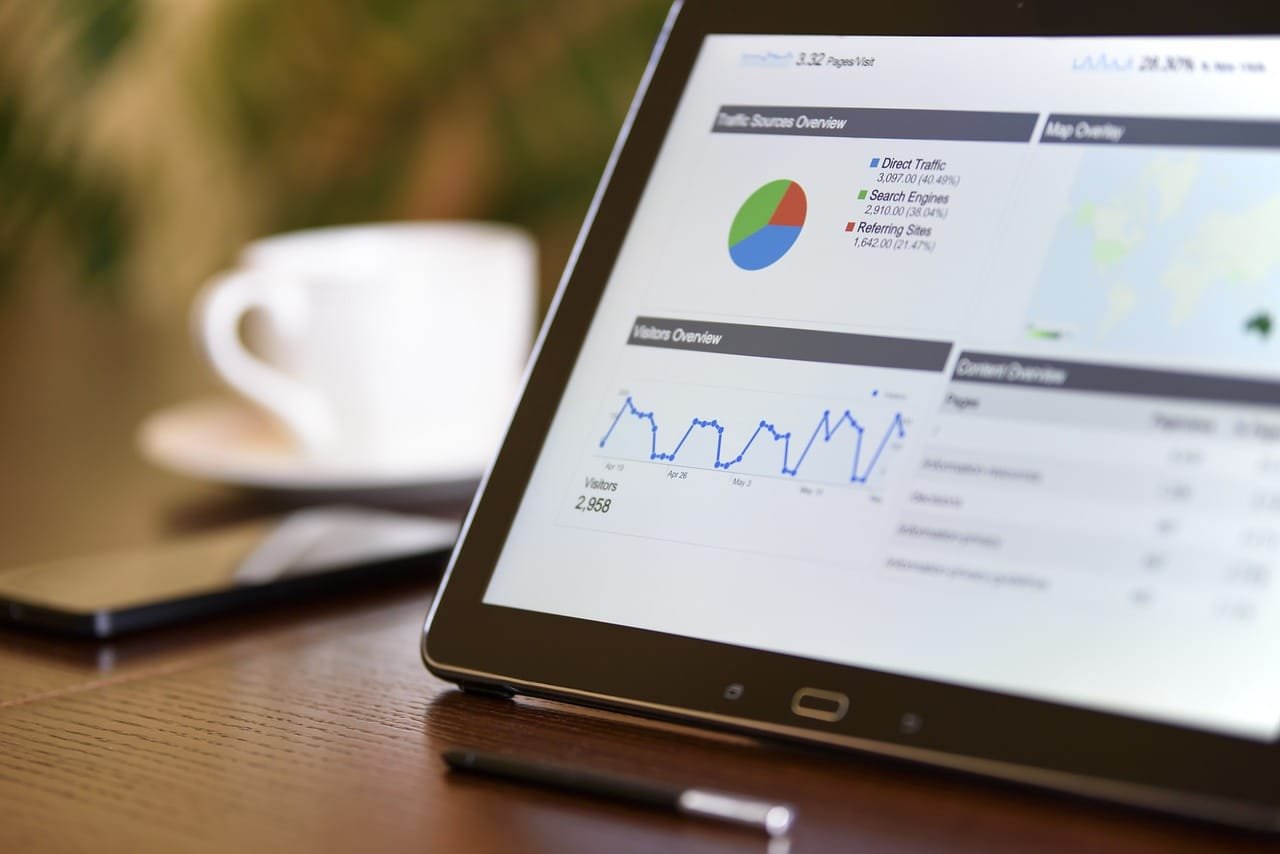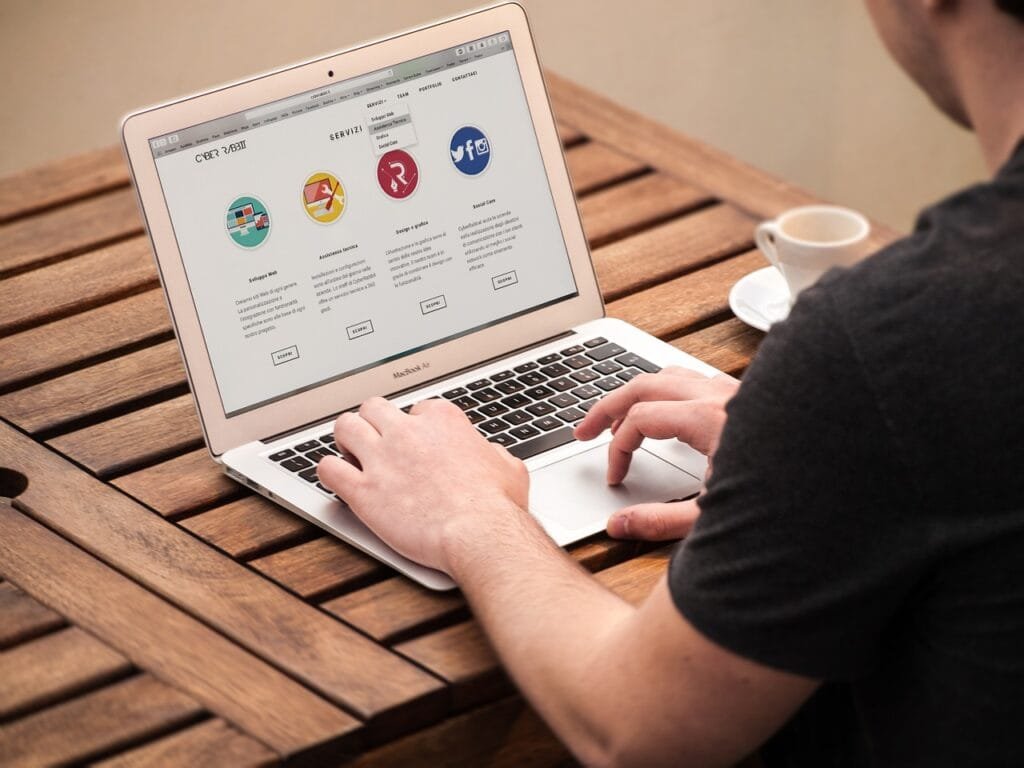This Article has been revised, edited and added to, by Poulomi Chakraborty.
- The Landscape of International Link Building
- What is Link Building?
- Why International Link Building for Sustainable Brands?
- Understanding Market-Specific Search Engine Dynamics
- Navigating Cultural and Linguistic Nuances
- Regulatory Compliance and Ethical Link Building
- Leveraging Local Competitor Insights
- Strategic Relationship Building with Local Authorities and Businesses
- Harnessing Advanced Analytics for Targeted Link Building
- Sustainable Link Building Strategies for International Success
- Press Releases in Local Languages
- Competitor Analysis
- Local SEO Optimization
- Localized Content Marketing
- User-Generated Content (UGC) Campaigns
- Cultural Sensitivity in Link Building
- Building a Global Sustainability Network
- Conclusion
Imagine your sustainable brand making waves in your home country, advocating for environmental responsibility and offering eco-friendly products or services. You’ve established a strong online presence and optimized your website for search engines. However, when you decide to expand your reach to international markets, you hit a roadblock. Your website’s traffic remains stagnant, and your global audience seems elusive. What’s missing?
The answer might lie in the power of international link building—a strategy that not only enhances your website’s visibility but also builds credibility and trust with audiences around the world. In this article, we will guide you through the intricacies of international link building, focusing on tactics tailored to sustainable brands.
The Landscape of International Link Building

Before we delve into the specifics of international link building for sustainable brands, let’s first understand the fundamentals of this strategy.
What is Link Building?
Link building is the process of acquiring hyperlinks from other websites to your own. Search engines like Google consider these links as votes of confidence in your website’s authority and relevance. The more high-quality and relevant links you have, the more likely your website is to rank higher in search results.
Why International Link Building for Sustainable Brands?
Expanding your sustainable brand internationally opens up exciting opportunities for growth. International link building takes this expansion to the next level by:
- Boosting Global Visibility: High-quality international links help your brand gain visibility in new markets and languages.
- Establishing Credibility: When reputable international websites link to your brand, it signals trust and authority to both users and search engines.
- Enhancing Local SEO: International links can improve your local search engine optimization (SEO), making your brand more discoverable in specific regions.
Understanding Market-Specific Search Engine Dynamics
When embarking on international link building, it is essential for startup founders to grasp the dynamics of search engines specific to their target markets. Unlike the predominant focus on Google in the U.S. and much of Europe, other regions may rely more heavily on alternative search engines like Baidu in China, Yandex in Russia, or Naver in South Korea.
Each of these search engines has unique algorithms and SEO practices. Startups must adapt their link-building strategies accordingly by researching and understanding the SEO guidelines for each search engine to enhance their visibility effectively.
Navigating Cultural and Linguistic Nuances
The success of international link building is largely contingent upon understanding and integrating the cultural and linguistic nuances of the target audience. This goes beyond mere translation of content; it involves a deep dive into the local culture to tailor messages that resonate with local values, traditions, and consumer behaviors.
For instance, a sustainable brand looking to establish a foothold in Japan must appreciate the Japanese emphasis on minimalism and precision, reflecting these values in their marketing communications to forge stronger connections and facilitate the acquisition of meaningful links.
Regulatory Compliance and Ethical Link Building
Every market comes with its set of regulations and expectations concerning digital marketing. Particularly for sustainable brands, being aware of and compliant with these regulations is not just necessary for legal operations but also crucial for maintaining brand integrity.
For example, the European Union’s GDPR significantly impacts how data is collected and used in link-building activities, necessitating transparent and ethical practices. Ensuring compliance with such regulations not only safeguards against legal repercussions but also boosts the brand’s credibility in international markets.
Leveraging Local Competitor Insights
A strategic approach to international link building should include a thorough analysis of local competitors. Understanding whom your competitors are linking with and how they position their content can provide valuable insights into local market preferences and successful strategies.
This analysis can uncover potential niches or partnership opportunities that may have been overlooked, allowing startup founders to carve out a unique space in the market by offering something distinctly valuable or by filling gaps left by competitors.
Strategic Relationship Building with Local Authorities and Businesses
Developing relationships with local businesses, industry leaders, and even governmental or non-governmental organizations can significantly amplify a brand’s link-building success. Engaging with these entities through sponsored events, joint research, or community projects can lead to high-quality backlinks from reputable sources.
These relationships not only enhance the brand’s link profile but also strengthen its local presence and relevance, making the brand a recognized part of the community.
Harnessing Advanced Analytics for Targeted Link Building
Advanced analytics tools and software can drastically improve the efficiency and effectiveness of link-building campaigns. By analyzing backlink profiles, market trends, and consumer behavior data, startups can identify the most impactful types of content and partnership opportunities within specific markets.
This targeted approach not only conserves resources but also significantly boosts the ROI of link-building efforts by focusing on tactics that yield the best results.
Sustainable Link Building Strategies for International Success
When it comes to international link building for sustainable brands, a one-size-fits-all approach won’t cut it. You need tailored strategies that resonate with audiences in different cultures and regions. Here are actionable tactics to help you build a robust international link building campaign:
Leverage Sustainability Partnerships
Collaboration is a powerful way to expand your reach. Partner with sustainable organizations, NGOs, or influencers in your target markets. Not only can you jointly promote sustainability initiatives, but you can also earn backlinks from their websites.
Guest Blogging in Multiple Languages
Create valuable, informative content related to sustainability and eco-friendly practices. Offer to guest post on reputable websites in your target countries or regions. Ensure that your content is localized, addressing the unique needs and interests of each audience.
Local Directories and Listings
Submit your sustainable brand to local directories and listings in your target markets. This not only improves your online visibility but also provides valuable backlinks. Ensure your business information is accurate and consistent across all directories.
Transcreate Content
Transcreation goes beyond translation. It involves adapting your content to suit the cultural nuances and preferences of your target audience. Ensure that your blog posts, product descriptions, and website content resonate with the local culture.
Collaborate with Local Influencers
Identify influential figures in your target markets who are passionate about sustainability. Partner with them for co-created content or campaigns. Their endorsement can lead to valuable backlinks and increased brand recognition.
Multilingual Content Hubs
Establish content hubs on your website dedicated to different languages or regions. Each hub should offer valuable and relevant content in the local language. This not only caters to your diverse audience but also helps in earning backlinks from websites in those regions.
Build Relationships with Local Media
Reach out to local newspapers, magazines, and online media outlets that cover sustainability and eco-friendly topics. Offer to provide expert insights, guest articles, or interviews. When they mention your brand, you gain authoritative backlinks.
International Social Media Engagement
Engage with sustainability-focused communities and influencers on social media platforms popular in your target markets. Share your sustainable initiatives and content. When these influencers and communities notice your brand, they may link to your website.

As a website owner today, backlinking is still an important part of my marketing plan. While ChatGPT has reduced the way guest bloggers are used, it hasn’t eliminated them altogether.
Guest blogging is still a great way to build back-links, with one caveat. Guest bloggers today will need to be true experts in your field. They need to provide high-quality content that is current, relevant, and interesting to your target audience.
Having random bloggers fill space is no longer a useful approach. Quality niche-specific content is key. The better the article, the more readers will share it and link to it on their sites.
Another good way to ensure your business is securing as many backlinks as possible is to form relationships with social media influencers. Not just one-off content creation on a specific product or service. Building genuine long-term relationships with social media influencers who are relevant in your field, can make the link-building process easier in the long run.
You’re essentially establishing a beneficial connection that you can use time and time again. Even micro-influencers, if they are niche-specific, can be a good resource for your link-building endeavors.
Sofia Perez, Owner and Content Manager at Character Counter.

Related: Check out our free SEO suite

Press Releases in Local Languages
When launching new sustainability initiatives or products in specific regions, issue press releases in the local language. Distribute them through reputable channels to gain media coverage and valuable backlinks.
Crafting Impactful Press Releases
The power of a press release lies in its ability to communicate a compelling narrative about your brand’s developments, achievements, or contributions in a manner that appeals to both media outlets and the target audience.
For startups, the focus should be on crafting press releases that highlight their sustainable initiatives and innovations in a way that resonates with local markets. This involves not only translating the content but also aligning it with local interests, values, and news trends.
For instance, if a sustainable brand launches a new eco-friendly product in Germany, the press release should emphasize aspects such as resource efficiency and waste reduction, topics that are highly valued in German environmental discourse.
Selecting the Right Platforms for Distribution
The effectiveness of a localized press release also depends on choosing the right platforms for its distribution. This means identifying and leveraging local news agencies, industry journals, and digital platforms that are most influential in the target market.
Each market will have preferred and trusted sources for news; in France, for example, platforms like AFP (Agence France-Presse) are crucial for wide dissemination. Additionally, engaging local PR agencies can provide access to their established networks and insider knowledge about the best channels and practices for press release distribution in the region.
Timing and Frequency of Press Releases
Timing is critical when disseminating press releases. Aligning the release with local events, trends, or even economic cycles can greatly enhance its impact and relevance. For instance, releasing news about innovative sustainable packaging during a major recycling awareness week in Brazil can capture more attention and coverage.
Moreover, maintaining a consistent schedule for press releases can help sustain interest and engagement with the brand. However, the frequency must be balanced to avoid overwhelming the audience and to keep the news fresh and newsworthy.
Interactive and Multimedia Elements
To stand out in the crowded media landscape, incorporating interactive or multimedia elements into press releases can be highly effective. This could include high-quality images, infographics, or videos that illustrate the sustainable practices of the brand or demonstrate the impact of a new product.
These elements not only make the press release more engaging but also more shareable on digital platforms, increasing its reach and the likelihood of obtaining backlinks from reputable sources.
Follow-up and Relationship Building
After the distribution of a press release, proactive follow-up is crucial to maximize its impact. This can involve arranging interviews with key company representatives, offering exclusive insights to journalists, or hosting press events that provide deeper engagement with the content of the release.
Building relationships with journalists and media outlets as part of this process not only aids in the effective dissemination of current press releases but also facilitates smoother and more favorable media coverage in the future.
Competitor Analysis

Research your competitors’ international link building strategies. Identify websites that link to them and reach out to those sites. Explain why your sustainable brand offers unique value and why they should consider linking to your content or website.
Developing a Deeper Understanding of Competitor Tactics
To effectively leverage competitor analysis in international link building, startup founders must first undertake a deep dive into their competitors’ tactics, examining not just who links to them, but why they earn those links.
This involves analyzing the content, outreach strategies, and the partnerships that competitors engage in across different markets. It is crucial to identify the type of content that gains traction, whether it’s research-driven, community-focused, or innovation-based.
This insight allows startups to craft a differentiated approach that either fills gaps left by competitors or surpasses their efforts in quality and engagement.
Utilizing Advanced Analytical Tools
The use of advanced SEO tools such as Ahrefs, SEMrush, or Moz can provide an in-depth look at competitors’ backlink profiles. These tools help reveal patterns in link acquisition strategies and pinpoint high-authority domains that link back to competitors.
By understanding these patterns, startups can identify potential opportunities for similar partnerships or find new niches that are underutilized by current market leaders. Additionally, these tools can track changes in competitors’ link-building strategies over time, providing ongoing insights that can inform tactical adjustments.
Segmenting Competitor Strategies by Region
Different markets may react differently to the same strategies. As such, it is vital for startups to segment their competitor analysis by region, examining how competitors adapt their link-building approaches to fit local preferences and search engine practices.
This regional analysis can uncover localized tactics that are particularly effective, providing a template for engaging with similar markets. For example, a competitor’s success with video content in South America might inspire similar multimedia-based strategies in markets with high mobile usage and social media engagement.
Engaging with Emerging Markets
Competitor analysis should also include a focus on emerging markets where competition may be less intense but growth potential is high. By analyzing the early movers in these markets, startups can gain a first-mover advantage in link-building efforts.
This approach often requires a balance between adapting successful strategies from established markets and innovating to meet unique local demands.
Learning from Competitors’ Mistakes
Just as important as understanding what competitors do right is learning from their mistakes. Startups should look for patterns of link attrition or negative SEO impacts in their competitors’ strategies, which can indicate tactics to avoid.
This can include overly aggressive link acquisition, poor quality content, or failure to adapt to local market changes. By learning from these pitfalls, startups can refine their strategies to maintain both the effectiveness and integrity of their link-building efforts.
Local SEO Optimization
Optimize your website for local SEO by including region-specific keywords, creating location-specific landing pages, and obtaining reviews from local customers. Local SEO optimization not only improves your local visibility but also enhances your chances of earning local backlinks.
Integrating Regional Keywords and Content
Local SEO optimization starts with an in-depth understanding of regional keywords that are relevant to each target market. This requires more than simple translation; it demands a comprehensive local keyword research process to capture the nuances of how local consumers search for sustainable products and services.
Startups must develop content that not only incorporates these keywords but also aligns with local interests and cultural specifics. For example, a sustainable brand may use different terminologies and address different environmental concerns in Scandinavia compared to Southeast Asia, reflecting varied local environmental priorities.
Crafting Geo-Specific Landing Pages
Creating dedicated landing pages for each target region significantly boosts local SEO efforts. These pages should cater specifically to the local audience with tailored content, regional contact information, and localized design elements.
This not only improves user experience but also increases relevance in local search results. Each landing page should serve as a hub for local content, events, and community engagement initiatives, making it a rich source of localized information that attracts both users and search engines.
Utilizing Structured Data for Local Listings
To enhance visibility in local search results, it’s essential to implement structured data correctly on your website. This includes using schema markup to highlight local business details such as address, phone number, and opening hours.
Structured data helps search engines understand the geographic relevancy of your website, making it easier to display your site in local search queries and on map results. Proper use of structured data not only boosts SEO but also enhances the user experience by providing clear and concise information directly in search results.
Encouraging Local Reviews and Social Proof
Local reviews are a powerful tool for improving SEO and building trust with potential customers. Encouraging satisfied customers to leave positive reviews on platforms like Google My Business, Yelp, and other local directories can significantly impact local search rankings.
Additionally, showcasing these reviews on your regional landing pages provides social proof to prospective customers, further enhancing credibility and trust in the brand.
Building Local Backlinks
Developing a strategy to acquire backlinks from local sources such as regional news outlets, business associations, and local influencers can have a significant impact on local SEO. These backlinks signal to search engines that your website is an authoritative and relevant resource within the local community. Collaborating on local projects, participating in community events, and engaging with local media are effective strategies to earn these valuable local links.
Localized Content Marketing

In addition to international link building, it’s crucial to complement your efforts with localized content marketing. Create blog posts, videos, infographics, and other content formats that resonate with the cultural and linguistic preferences of your target markets. This content can serve as a valuable resource for attracting international backlinks.
Creating Culturally Relevant Content
The cornerstone of effective localized content marketing is the creation of content that resonates on a cultural level with each target market. This involves more than just language translation—it requires a deep understanding of local customs, values, and pressing issues.
For sustainable brands, this might mean focusing on specific environmental issues prevalent in certain regions, such as water conservation in arid areas or sustainable fishing in coastal communities. By addressing these localized concerns, startups can position themselves as empathetic and committed partners in local sustainability efforts.
Leveraging Local Storytelling Techniques
Storytelling is a powerful way to connect with audiences, and each culture has its unique storytelling traditions. Startups should strive to incorporate these local storytelling methods into their content to enhance engagement.
This could include using narrative structures, idioms, and examples that reflect local literature or oral traditions, making the content more engaging and relatable to the local audience. For instance, incorporating well-known local legends or success stories into blog posts or videos can increase their appeal and shareability among the local populace.
Utilizing Local Media and Content Formats
Different regions may prefer different types of media. While some markets might engage more with video content, others might prefer podcasts or written articles. Understanding and adapting to these preferences is crucial for effective content marketing.
Additionally, utilizing popular local platforms for content distribution—such as Line in Thailand for social media posts or KakaoTalk in South Korea for mobile marketing—can greatly increase reach and effectiveness.
Interactive and Visual Content for Engagement
Interactive content such as quizzes, surveys, and interactive infographics can significantly increase user engagement and time spent on site, which are positive signals to search engines.
Visual content, particularly when tailored to include local landscapes, cityscapes, or culturally significant imagery, can make content more appealing and relatable to local users. This strategy not only enhances user experience but also encourages sharing and engagement, which are crucial for building links and online presence.
Collaborating with Local Creators and Influencers
Partnering with local content creators and influencers who align with sustainability values can amplify your content’s reach and authenticity. These partnerships can lead to co-created content that naturally appeals to the local audience’s tastes and preferences, thereby increasing the effectiveness of content marketing strategies.
Furthermore, these collaborations often lead to cross-promotion on various channels, enhancing the overall link-building effort with high-quality, local backlinks.
User-Generated Content (UGC) Campaigns
Encourage users and customers in your target markets to create and share content related to your sustainable brand. UGC campaigns can include reviews, testimonials, or user-generated social media content. Showcase this UGC on your website to attract organic backlinks from individuals who appreciate your brand.
Cultivating a Community-Centric Approach
At the heart of successful UGC campaigns lies the ability to cultivate a strong sense of community among users. Startups should focus on building platforms where customers feel valued and heard, encouraging them to share their experiences and stories.
This might involve creating dedicated forums, community pages, or hashtag campaigns specifically designed for users to showcase how they use the brand’s products in their everyday lives, especially in ways that underscore sustainability.
Facilitating a space where customers can express their thoughts and see real people making a difference reinforces trust and loyalty to the brand.
Designing Engaging UGC Initiatives
To truly tap into the power of user-generated content, startups need to design campaigns that are engaging and easy for users to participate in. This could involve contests that challenge users to come up with innovative ways to reuse product packaging or video testimonials about the personal impact of adopting sustainable practices.
The key is to make these initiatives fun, accessible, and rewarding. For example, offering incentives such as discounts, featured posts on official brand channels, or even a chance to co-create a product can significantly increase participation rates.
Leveraging Local Events and Causes
Integrating local events and causes into UGC campaigns can greatly enhance their relevance and appeal. Startups might sponsor local environmental clean-ups or sustainability fairs and encourage attendees to document their participation through photos and videos shared with specific hashtags.
This not only provides the brand with authentic local content but also strengthens its presence and commitment to local communities. It’s a powerful way to generate content that has a real impact and is deeply connected to local values and interests.
Utilizing Tools to Streamline UGC Collection and Display
To effectively manage and utilize user-generated content, startups need to invest in tools that can help collect, moderate, and display UGC across their digital platforms. Tools like TINT, Yotpo, or Curalate can automate the aggregation of content tagged with specific hashtags or submitted via online forms.
These tools can also help ensure that the content displayed aligns with the brand’s values and maintains a high quality, which is crucial for sustaining the brand’s reputation.
Personalizing User Interactions
Personalizing interactions with users who submit content can foster deeper connections and encourage ongoing engagement. Responding personally to UGC submissions, featuring user stories in newsletters or on product pages, and recognizing contributors by name can make users feel appreciated and part of the brand’s journey.
This level of personal engagement not only enhances user satisfaction but also increases the likelihood of these contributors becoming brand ambassadors, further amplifying the reach and impact of UGC campaigns.

It’s important to differentiate content when it comes to quality. While ChatGPT has definitely increased the amount of content that’s out there, it still can’t compete with the quality of genuine, human-generated content.
The key here is expertise. ChatGPT can create passable generic content, but it can’t offer real, personal insight. Our approach here has been to make our content much more human-centric, focusing on our direct experience in the moving industry and featuring our actual employees.
Nick Valentino, VP of Market Operations of Bellhop Atlanta Movers
Cultural Sensitivity in Link Building
Incorporating Cultural Insights into Strategy Development
Understanding and incorporating cultural nuances into link-building strategies is essential for startups aiming to make an impact on a global scale. This process involves more than recognizing basic cultural differences; it requires an in-depth analysis of local customs, consumer behavior, and communication styles.
Startups should consider working with local experts or cultural consultants to ensure that their link-building activities are not only effective but also culturally appropriate.
For instance, a campaign that works well in a direct communication culture like the U.S. might need adjustment to fit a more context-sensitive market like Japan.
Adapting Content to Local Norms and Values
Content must be tailored not just to avoid cultural faux pas, but also to resonate deeply with local audiences. This involves adapting the tone, style, and even the visual elements of content to align with local preferences.
In markets with high uncertainty avoidance, such as Germany, content that provides detailed data and thorough explanations might perform better than in more uncertainty-tolerant cultures where a direct and concise message might be preferred.
Ensuring that all content reflects an understanding of and respect for local norms and values not only enhances engagement but also builds trust and credibility.
Ethical Considerations in Local Market Engagement
Ethics play a crucial role in link-building activities, particularly when dealing with diverse cultures. Startups need to ensure that their practices do not exploit or misrepresent local communities and that they contribute positively to the markets they enter.
This ethical approach should be transparent in all aspects of the link-building process, from the choice of local partners and influencers to the methods of content distribution.
By prioritizing ethics, companies not only avoid potential backlash but also establish themselves as responsible and respectful participants in the local market.
Localizing Interaction and Engagement Strategies
Effective engagement in link-building requires a strategy that considers local communication preferences and platforms. This might mean using popular social media platforms unique to a region, like WeChat in China or VK in Russia, or adapting engagement tactics to fit local online behaviors.
Additionally, interaction strategies such as customer service, feedback collection, and community engagement must be localized to ensure they are culturally appropriate and effective. Tailoring these aspects helps in building meaningful connections that can lead to sustainable link-building partnerships.
Monitoring and Responding to Cultural Trends
Cultural trends can influence consumer behavior significantly, and staying abreast of these trends is vital for timely and relevant link-building. Startups should set up processes to monitor cultural shifts, local news, and trending topics in their target markets.
This proactive approach not only helps in adjusting strategies swiftly but also provides opportunities to engage with local audiences through current and culturally relevant content.
Leveraging trending topics or aligning with local movements can improve the effectiveness of link-building campaigns and ensure that the brand remains connected to its audience.
By integrating these culturally sensitive practices into their international link-building efforts, startups can enhance their effectiveness and foster stronger, more authentic relationships with their target audiences globally. This approach not only boosts the success of link-building campaigns but also supports the overall sustainability and ethical positioning of the brand in international markets.
Building a Global Sustainability Network

Ultimately, international link building for sustainable brands is about building a global network of like-minded individuals, organizations, and communities. Foster connections, share knowledge, and collaborate on initiatives that promote sustainability and environmental responsibility worldwide.
Leveraging Global Partnerships for Local Impact
A key strategy in building a global sustainability network involves forming partnerships that transcend geographical boundaries while delivering local impacts. Startups should aim to connect with both global and local entities such as environmental organizations, academic institutions, and industry leaders that share a commitment to sustainability.
These partnerships can facilitate the exchange of ideas, resources, and best practices. By engaging in joint projects, such as global environmental initiatives or sustainability conferences, startups can strengthen their network ties and enhance their credibility, leading to more robust link-building opportunities.
Utilizing Technology to Bridge Geographical Divides
In today’s digital age, technology plays a crucial role in maintaining and expanding international networks. Startups should utilize digital platforms and tools to facilitate regular communication, collaboration, and project management across different countries.
Platforms like Slack, Zoom, or Asana can help maintain the momentum of global initiatives by enabling seamless collaboration. Furthermore, leveraging technology to host virtual conferences or webinars on sustainability topics not only positions the brand as a thought leader but also attracts links from diverse geographical locations.
Developing Shared Value Initiatives
Creating shared value involves strategies that address sustainability challenges while delivering economic returns. Startups can work on developing programs that benefit the environment and local communities, thus creating stories and case studies that are link-worthy from reputable sources.
For example, a startup might invest in a community-driven reforestation project in a target market, which not only aids local ecosystems but also generates positive media content that enhances backlinking opportunities.
Fostering Cultural Exchange and Learning
Building a global network also means embracing cultural diversity within the sustainability community. Startups should encourage cultural exchanges that allow team members and partners from different regions to share their unique perspectives on sustainability.
This can be facilitated through staff exchange programs, international workshops, and collaborative research projects. Such initiatives help to deepen understanding and respect for diverse cultural approaches to sustainability, strengthening the network’s unity and effectiveness.
Committing to Long-Term Relationship Building
The foundation of a successful global sustainability network is long-term commitment to relationship building. Unlike short-term link-building campaigns, cultivating a network based on shared sustainability goals requires ongoing effort and dedication.
Regularly engaging with network members through newsletters, annual meetings, and joint public statements on sustainability can keep the network active and engaged. Startups need to prioritize consistent communication and mutual support to maintain and grow these relationships over time.
By implementing these strategies, startups can build a powerful global sustainability network that not only supports their international link-building efforts but also contributes to their broader mission of promoting sustainable practices worldwide.
This network, built on the pillars of partnership, technology, shared value, cultural exchange, and long-term commitment, becomes a formidable force in both driving business success and advancing global sustainability initiatives.

Link-building has already started to change with the amount of Google core updates and changes that they’ve made to their ranking signals, so 2024 will be an interesting year. Beforehand, guest posts and doing mass outreach for link-building efforts became the norm.
Google has stated that links are now just one of the factors that goes into ranking, but it’s no longer viewed as one of the most important ranking factors.
I have a feeling that most companies will be focusing on creating more relevant and helpful content that gains passive links rather than mass outreaching pieces that aren’t deemed relevant or helpful. Focusing on E-E-A-T will also be vital in this transition.
Broken link building can provide some value still as well as you are not only helping other sites be more helpful to their end-users but now you will be included on a helpful site, thus making you more authoritative. Forum links will lose value… Guest posts will become irrelevant overtime.
Conclusion
International link building is an indispensable strategy for sustainable brands looking to expand their global reach and impact. By adopting a holistic and culturally sensitive approach to link building, you can connect with diverse audiences, build trust, and establish your brand as a leader in sustainability on a global scale.
Remember that international link building is an ongoing process that requires patience and adaptability. As you navigate the complexities of different markets and cultures, continue to refine your strategies based on real-world data and feedback.
If you have any specific questions, need further guidance on particular tactics, or would like assistance in implementing these strategies, don’t hesitate to reach out. Your sustainable brand has the potential to make a significant difference worldwide, and international link building is a powerful tool to help you achieve that goal.
Read Next:
- Local Keyword Research: Boosting Local SEO for Startups
- Competitor Keyword Analysis: Gaining Insight for Startup SEO
- Niche Keyword Research: Strategies for Startup Success
- Long-Tail vs. Short-Tail Keywords: Which Are Better?
- Step-by-Step Process for Finding Profitable Keywords





















Comments are closed.